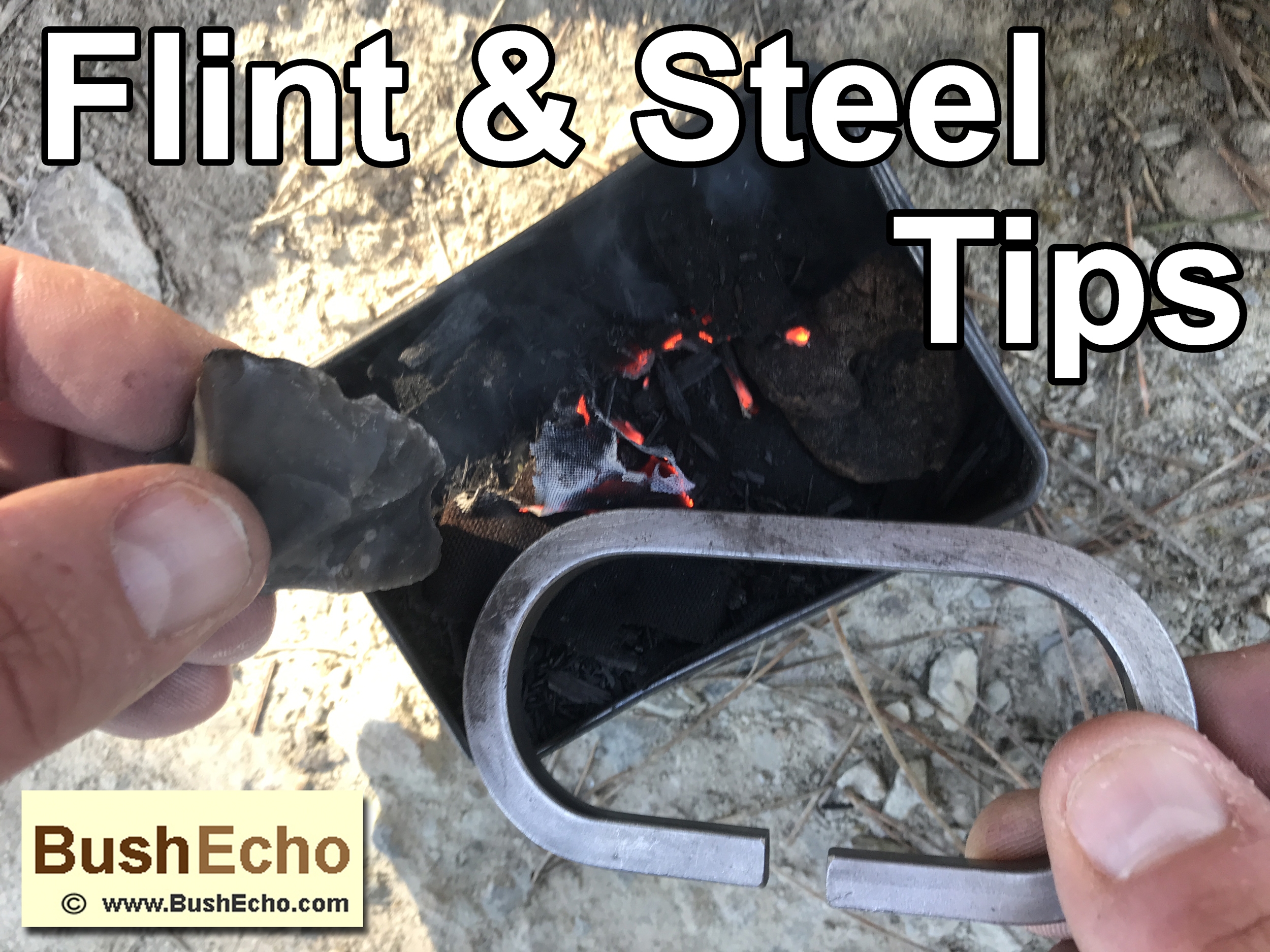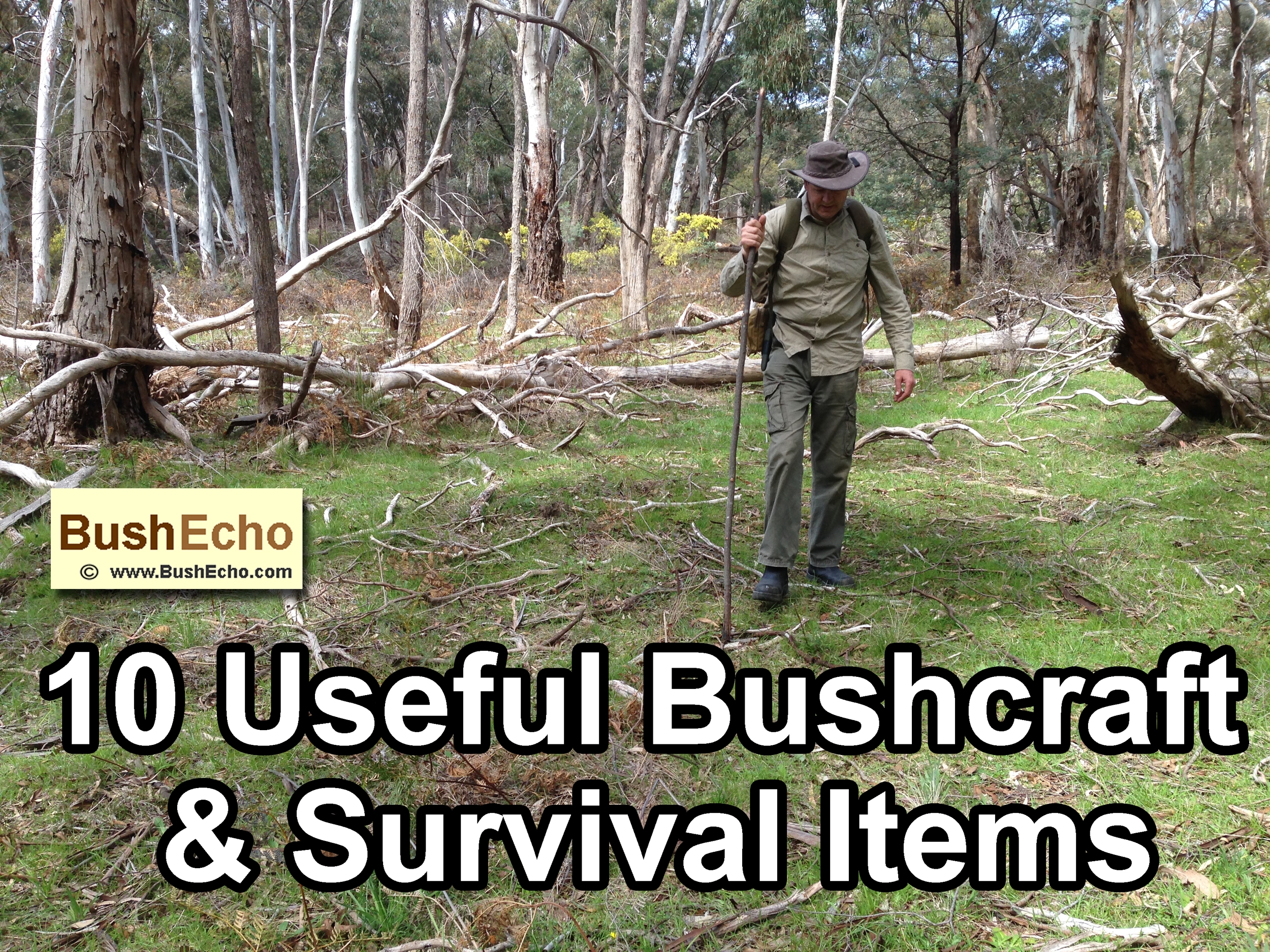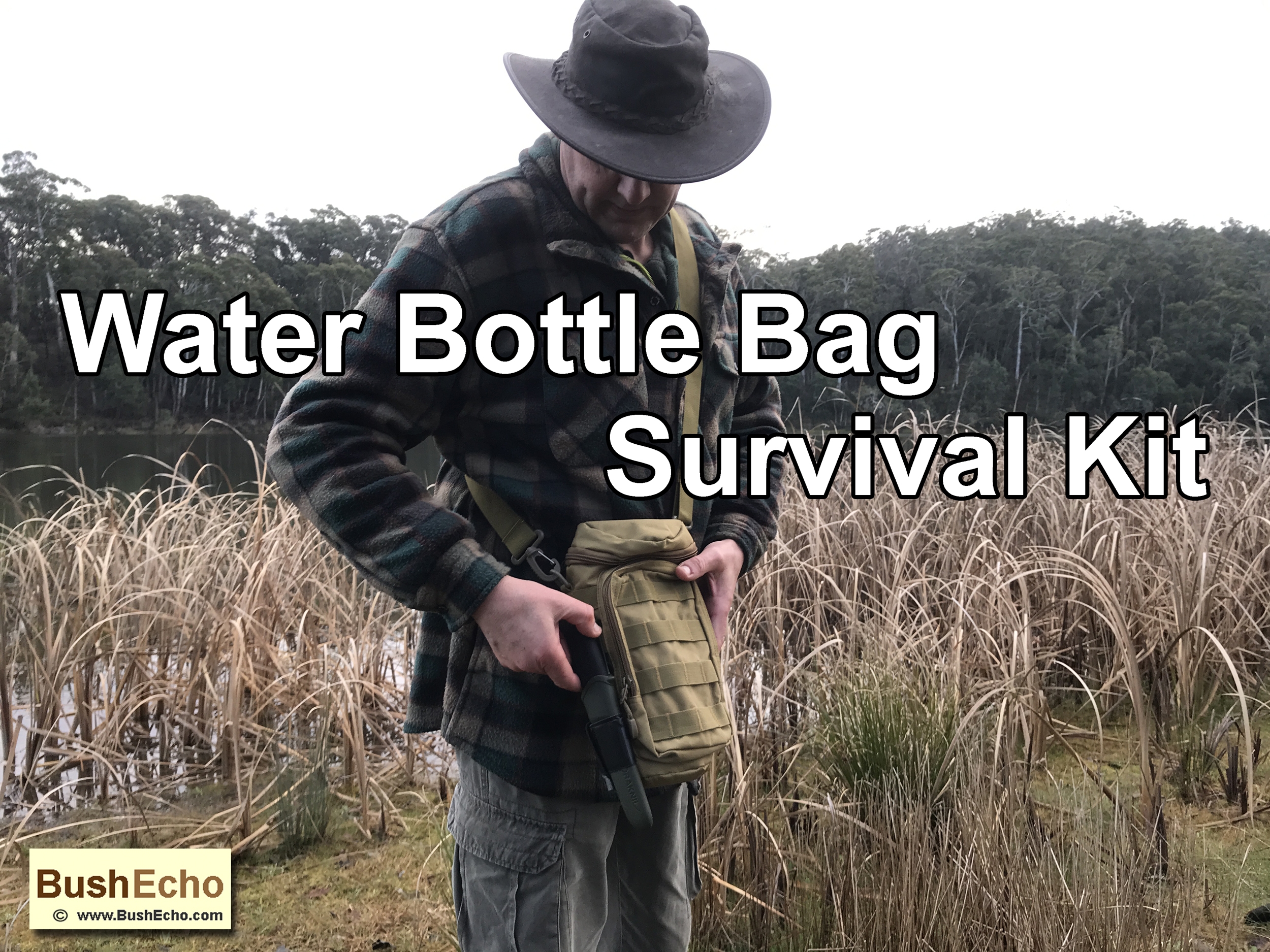The traditional flint and steel is a great tool for fire making with some preparation, such as char cloth. Used with charred material such as punk wood, it can be a sustainable way of creating fire.
For practicing bushcraft and survival skills, the flint and steel is a good transition to learning friction fire and for awareness for fire making.
But did you know you can start a fire with a porcelain plate and steel?
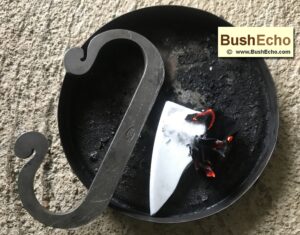
The process is exactly the same as a flint and steel. A steel striker is still used, but instead of using a flint rock, you use a broken piece of ceramic porcelain plate.
How the plate and steel gets a spark.
The hard ceramic edge of the plate slices minute particles of the steel which exposes iron particles. When exposed to the air, (Rusting and oxidation action.) the particles ignite giving a dull spark.
The steel striker should be a high carbon content. Some old files and tools may work.
How to start a fire with a plate and steel.
1. Place some char cloth on top of the porcelain shard. (Like using a flint and steel.)
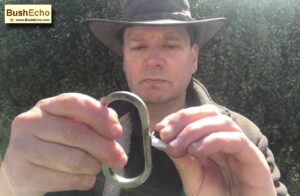
2. Hold the steel with the other hand. With a swift downward arc, strike the sharp plate edge until you get sparks.
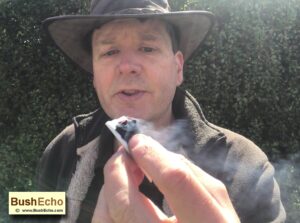
3. Once you have captured a spark on the char cloth, transfer the cloth to a tinder bundle.
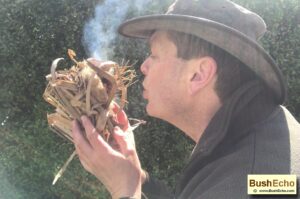
4. Blow the ember in the tinder bundle into flame.

(Alternatively, you can also place charred material in a tin. Hold the steel stationary over the tin. Strike downwards with the plate piece, landing some sparks into the material and tin.)
The tinder bundle.
Have your tinder bundle ready and make sure it is processed well to take an ember.
Any fibrous barks, dry leaves, dry pine needles, etc., that you can shred, roll, rip and break up should work. Also ensure your tinder bundle is dry and big enough.
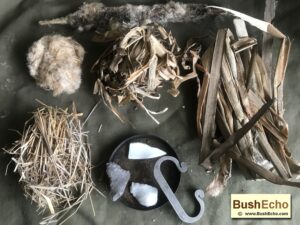
Above photo: The tinder bundle is made up of layers of dry cattail (Typha species.) leaves and seed heads, mixed in with some dry pine needles and shredded bark. (In England, cattail might be referred as Reedmace. In Australia it is commonly called Bullrush.)
Below image, is the finished layered product. Note the cattail spike inserted into the tinder bundle like a spike or handle. This makes it easier to hold safely when on fire.

Tips and info.
Just like using a flint flake or quartz, ensure the porcelain plate edge is sharp.
You can also knap the porcelain edges to get a sharper edge.

Above image: Using the edge on the steel to knap a sharp edge on the ceramic piece. (I am using a sea shell as a platform underneath it.)
The plate generally doesn’t get as good as sparks as a flint (Or quartz, chert, jasper, etc.) but enough to catch a spark on some charred material.
An alternative to a plate, is to use an old ceramic bowl or cup.
For beginners, practice first just using the plate shard and steel first to get sparks, before placing char cloth on the plate. As it can be hard to hold the char cloth on the plate shard and strike at the same time. (Although it is probably easier using a sharp piece of flint rock, instead of porcelain.)
When you constantly get sparks then place the char cloth on the flake.
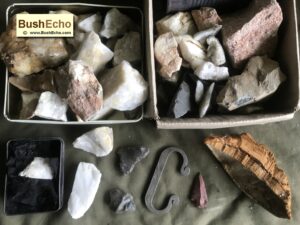
Above image: Just like having a few different flakes and pieces of flint, quartz, etc., as above, you might have to several pieces of porcelain.
For flint and steel ideas and hacks visit, Flint and Steel Tips.
If you are having trouble getting sparks, or a fire going visit Flint and Steel Troubleshooting.
It seems a lot harder to get sparks and for some tries it took me over a dozen or so strikes. Move the piece around to get a sharp edge. Or try different porcelain pieces for a sharper edge.
I am not sure of all the compositions and firing methods of the porcelain ceramic plates, cups, etc. But I assume that construction processes and materials very widely. So some plates may be easier to get sparks than others.
Because of the softer structure of the porcelain compared to a flint rock, I had to strike it firmer. The harder strike also probably blunts the plate edge quicker.
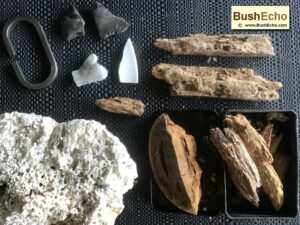
Above photograph: For a more sustainable way of creating fire, try using more natural materials like charred punkwood and different bracket fungus’s.
The fun part, smashing the plate.
Important Disclaimer – Please don’t use your wife’s antique, priceless heirloom, Qing dynasty plate! Or your wife’s favorite coffee cup. (Or if you do, blame the children for breaking it.)
Safety first, use safety glasses to break the plate. Using gloves as well might be a safer option, as the broken pieces can be sharp.
Place a cloth over the plate to ensure no sharp pieces go flying and hurt someone. Also place some cloth underneath it as well to make the cleaning up process easier.
You could also place the plate in a bucket, bag or bin, for ease of cleaning up. It also stops pieces go flying sideways. It is still use the safety glasses as bits can fly up.
A hammer makes it easy to break the plate up. Or to keep the process more bushcrafteeey, safely use the back of your favorite axe or tomahawk.
Bamboo and ceramic plate for fire making?
For something even cooler then creating a fire with a porcelain plate and steel, is using bamboo and porcelain plate.
Not any old piece of bamboo will work, it has to be a certain species of bamboo.
Daniel Hume, author of Fire Making: The Forgotten Art of Conjuring Flame with Spark, Tinder and Skill, has a chapter on this amazing unusual technique.
A great book to read, click on Daniel Hume, Fire Making Book Review for more information on the art of fire making.
Summary.
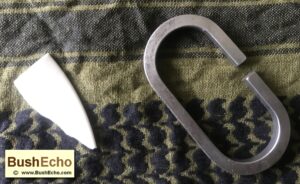
Using the plate and steel for making a fire is a bit of a novelty. I wouldn’t rely on starting a fire with a plate and steel for survival purposes. (A Bic lighter and other back up tools would be my choice.)
However, for extra practice with the flint and steel, learning more about ways for creating fire, the plate and steel is worth experimenting with.
As well, it is just plain fun to play around with.
Affiliate Links – This article may contain some affiliate product and Amazon affiliate links. This comes at no additional cost to the reader, and helps to support the website. Thank you.
Copyright © by BushEcho. Content on this site cannot be copied and is protected by copyright law. Please contact the author/s for permission.
Disclaimer – This information is for educational purposes only. The author/s and website disclaim liability for any damage, mishap, or injury that may occur from engaging in any activities or ideas from this site.

